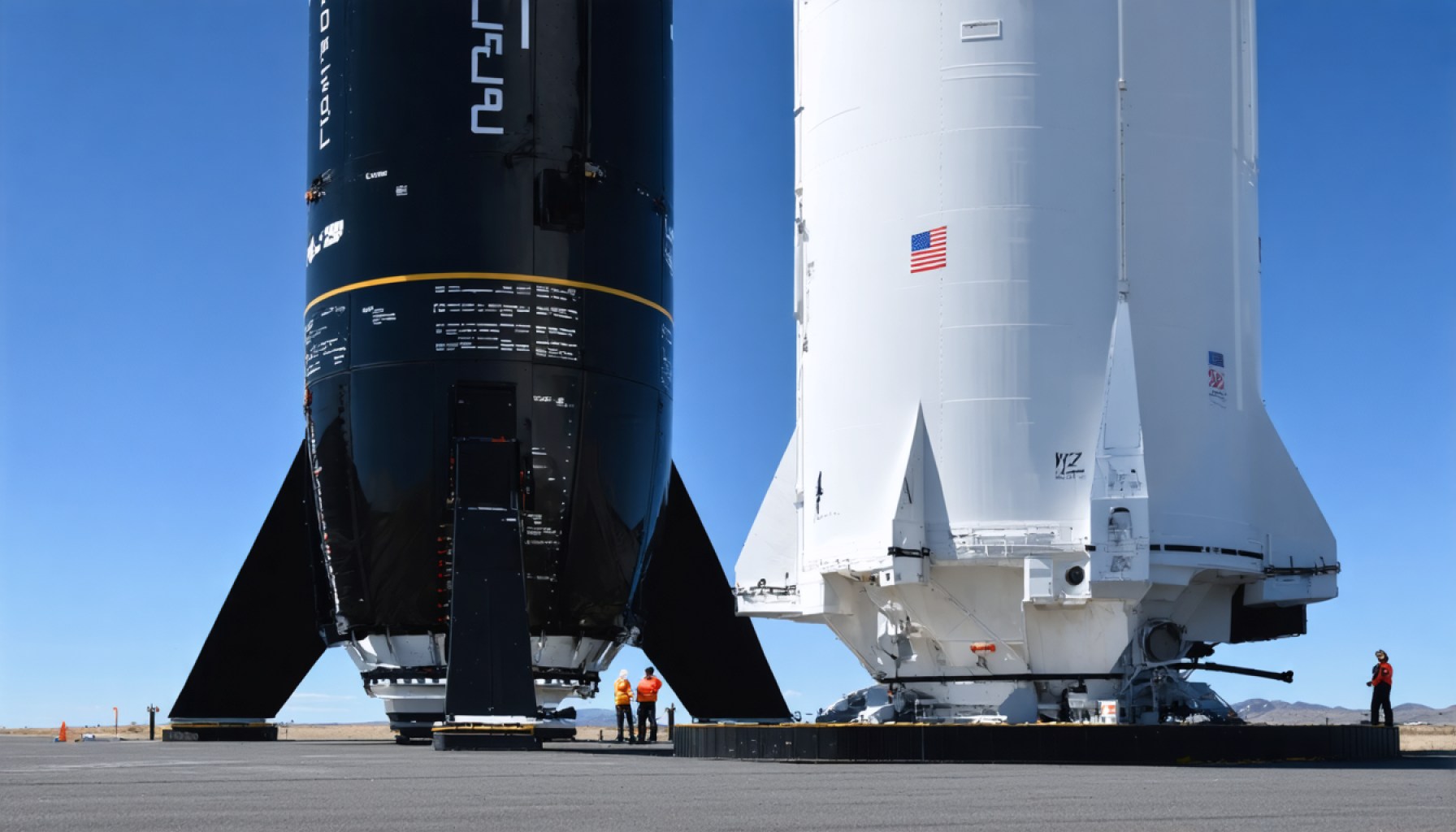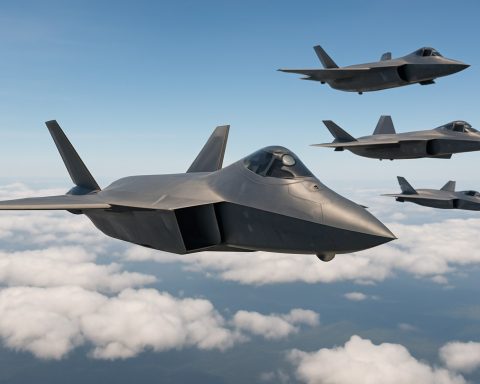- Rocket Lab has joined a $46 billion U.S. Air Force contract, accelerating investor interest and causing its stock to rise by 15%.
- The contract, an Indefinite Delivery-Indefinite Quantity (IDIQ) agreement, includes 297 companies, signaling strong competition for funds.
- If splitting evenly, Rocket Lab would receive about $22 million annually, representing 6% of its current revenue, which is modest growth.
- Rocket Lab is positioned as the second most active U.S. rocket launcher, giving it a competitive edge over smaller firms.
- Major competitors include Boeing, Lockheed Martin, and Northrop Grumman, complicating the pursuit of substantial shares.
- Rocket Lab is also involved in the UK’s $1.3 billion HTCDF, reducing competitive pressure compared to the U.S. contract.
- While earnings from these contracts may appear modest, they signify a strategic expansion toward defense and diversified revenue streams.
Straddling the worlds of space exploration and military defense, Rocket Lab recently ignited investor enthusiasm with its inclusion in a massive $46 billion contract. The headlines were ablaze with the promise of hypersonic test launch capabilities for the United States and the United Kingdom, propelling Rocket Lab’s stock to surge by 15% in the wake of this announcement. However, the glitter of such a contract might not be as substantial as it seems.
At the heart of the excitement lies a Indefinite Delivery-Indefinite Quantity (IDIQ) contract orchestrated by the U.S. Air Force under its Enterprise-Wide Agile Acquisition Contract (EWAAC). While the $46 billion figure is impressive, it’s crucial to note that Rocket Lab is one of 297 companies vying for a slice of this financial pie. This aspect reveals a competitive and crowded landscape, where each company, hypothetically, could end up with a minimal share.
Further dissecting the numbers, if every participant received an equal portion, Rocket Lab might secure approximately $155 million over the span of the contract. Spread across seven years, it translates to a modest $22 million annually—around 6% of Rocket Lab’s current revenue. While a boost, this increment doesn’t promise a tectonic shift for the company thrusting its stock into new heights.
Despite this, Rocket Lab’s reputation as the second most active rocket launcher in America, just behind SpaceX, positions it well to capture a larger segment of the contract than its peers. Yet, giants like Boeing, Lockheed Martin, and Northrop Grumman, who are also in the contention, add a layer of challenge to winning substantial shares of the funds.
In tandem with its U.S. opportunities, Rocket Lab is also part of the UK’s Hypersonic Technologies & Capability Development Framework (HTCDF), a $1.3 billion endeavor with only 90 involved companies. Although the competitive pressure is lessened, spreading this contract equally would result in a modest $2 million annually per participant.
While the combined potential earnings from these two ventures might seem underwhelming against headline expectations, they still represent non-negligible growth. These contracts, albeit part of a broader, cluttered field, reinforce Rocket Lab’s strategic pivot towards defense, suggesting calculated steps in diversifying its income streams.
The takeaway here is not to underestimate Rocket Lab’s strategic positioning despite the seemingly diluted figures. True, the numbers may not shake the financial world, but Rocket Lab continues to solidify its place in the evolving future of hypersonic and aerospace technologies, paving the way for both stable and innovative growth. The real test will be how effectively Rocket Lab navigates this competitive arena to expand its presence and revenue footprint in both the defense and space sectors, keeping an eye on the giants it is attempting to outpace.
Rocket Lab’s Hypersonic Ventures: Is It Worth the Hype?
Rocket Lab’s recent inclusion in a massive $46 billion U.S. Air Force contract for hypersonic test capabilities has catapulted the company into the spotlight, even causing a 15% surge in its stock. However, a closer examination reveals that this news might not be as transformative as it initially appears.
A Competitive Environment
The $46 billion contract, despite its impressive size, is part of an Indefinite Delivery-Indefinite Quantity (IDIQ) arrangement. With 297 companies in the mix, Rocket Lab is one of many vying for a part of this large yet fragmented market. Even in another contract—the UK’s Hypersonic Technologies & Capability Development Framework (HTCDF)—the competition, albeit less crowded, still underscores the challenge of capturing significant revenue.
How IDIQ Contracts Work
An IDIQ contract doesn’t guarantee any specific contract ceiling to any participant. Instead, it allows for episodic selection based on need, offering flexibility in contract awards over time. This means Rocket Lab’s actual revenue could vary greatly depending on the specific task orders they secure.
Navigating Competition
While Rocket Lab is well-positioned as the second most active rocket launcher in America, companies like Boeing, Lockheed Martin, and Northrop Grumman pose significant competition. These industry giants bring substantial experience and relationships that could influence their ability to secure lucrative sub-contracts.
Growth Potential Despite Challenges
Despite the high competition, Rocket Lab’s strategic positioning for future growth is evident:
1. Market Forecasts & Trends:
– The global hypersonic market is projected to grow significantly over the next decade, driven by increasing defense budgets.
– Rocket Lab’s participation places it at the forefront of this emerging market.
2. Strategic Diversification:
– Engaging in both U.S. and UK contracts showcases Rocket Lab’s strategy to diversify its income streams beyond commercial satellite launches.
3. Expert Insights:
– Experts suggest that Rocket Lab’s strong track record in launching smaller payloads efficiently gives it a competitive edge in niche defense projects.
Actionable Strategies for Investors
1. Diversified Portfolio:
– Investors should view Rocket Lab as a strategic, long-term player capable of capturing growth in the expanding defense market.
2. Monitor Contract Wins:
– Keep an eye on the specific task orders Rocket Lab secures, as those will be more indicative of revenue impacts.
3. Consider Analyst Opinions:
– Analysts predict modest, yet stable growth for Rocket Lab, reinforcing its resilience and adaptability.
4. Long-Term View on Hypersonic Development:
– As hypersonic technology matures, expect increased demand for testing and deployment capabilities which Rocket Lab can provide.
Conclusion: Moving Forward
While the revenue from these hyped contracts may not be transformative in the short term, they position Rocket Lab to expand its influence in space and defense. Their growth story remains compelling, as they leverage these opportunities to refine their technological capabilities and strategic partnerships.
For more on cutting-edge space exploration and defense technologies, check out Rocket Lab.







